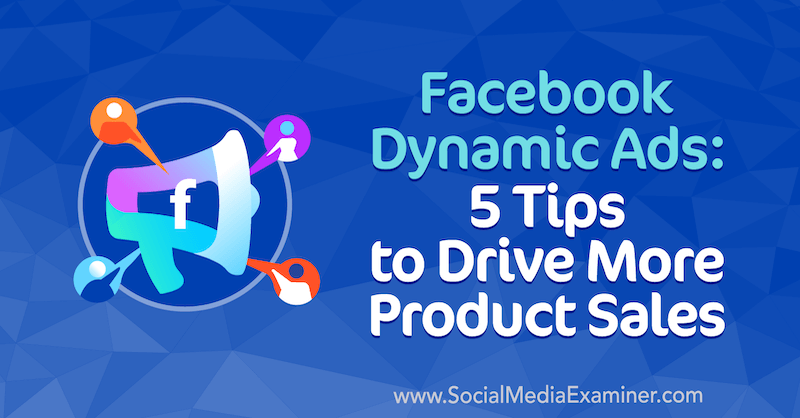Five of the best Digital PR and SEO link building strategies for 2023 – ranked
From newsjacking and ‘dream job’ campaigns to data-led PR and SEO link building tactics – there are a myriad of different approaches to securing relevant and high-quality backlinks to your website. While each approach has its own merits, they...

From newsjacking and ‘dream job’ campaigns to data-led PR and SEO link building tactics – there are a myriad of different approaches to securing relevant and high-quality backlinks to your website. While each approach has its own merits, they are not all equal in terms of how effective they are. Context also matters, and a link building approach that flies for one company, could flop for another.
In this article, I will review a small handful of common digital PR and link building tactics to help you decide whether they’re worth including in your SEO strategy (if you haven’t already!). We’ve been building backlinks for our clients via our digital PR team for years, and we keep a close eye on what others are doing online and at industry events. We’re also not scared to experiment ourselves, and often test out new digital PR approaches to see how effective they really are.
The list of PR/link building strategies reviewed in this article is not exhaustive, and we see many more brilliant linkbuilding tactics showcased every week. However, we have included a small handful of the most common approaches we see used online, and with clients.
Reactive PR and newsjacking – 9/10

The positives
Reactive PR or ‘news jacking’ is all about using the news agenda to get more out of your PR. In a nutshell, it usually involves creating a PR story that is a response to trending news.
From Aldi’s response to Marks & Spencer’s ‘Colin the Caterpillar’ legal action against them to the Daily Star’s live stream of a lettuce outlasting former Prime Minister Liz Truss – there are countless examples of how reactive PR can generate lots of brand traction and new links. On the less sensationalist side, reactive PR is also tactics like media statements, polling insights, or actions taken in response to news stories such as new policies (e.g., Bank of England interest rates update) or general trends in the news (E.g., inflation, the cost-of-living crisis).
For example, back during the pandemic, we helped one of our clients respond to the easing of lockdown measures with the launch of new social distancing duck whistles – landing them in several outlets such as the Daily Mirror and BBC News. It worked, because it responded to an event that was resonating with readers.
The right reactive PR story, pitched to the right people, at the right time, often returns a greater yield of media placements – and therefore links. The story being ‘new’ and ‘topical’ also makes it more newsworthy – therefore increasing the likelihood of landing your brand in higher quality media titles too.
Possible drawbacks and considerations
The need for speed
Your PR story needs to be pitched to the media as – or just after – the news story breaks. Or at least while it is very much still ‘live’. Would the Daily Star’s ‘Liz Truss lettuce’ stunt have gained so much traction had it been announced to the world after her resignation as Prime Minister, for example? Your PR story starts to lose its value rapidly the minute the news story you are responding starts to slip from headlines – so you need to ensure you have the resources and time to react to react.
Unpredictable, need to get ahead of the news agenda
Reactive PR is difficult to build into PR plans because none of us have a crystal ball. There are some things you can plan for – for example, we know that there will be events such as interest rate announcements, the King’s coronation next year, the Olympics, awareness days, and seasonal events like Christmas. But those events are competitive because everyone knows about them. It’s hard to plan beyond that and it requires a reactive approach and constant monitoring of the news.
Not always suitable
There are good reasons why some businesses avoid reactive PR. If your company has lengthy approval and decision-making processes, it won’t be able to react in time. The news agenda can also be sensationalist (spoiler alert) at times and some businesses (understandably) avoid that. For reactive PR to work, it also has to add something meaningful to the national conversation about that issue for journalists to take it seriously. Solely talking about the benefits of your product or brand values will still land your email in their deleted items.
Can be tricky for small businesses to make traction
When a household name releases a PR comment it is much more likely to be picked up by journalists than a similar statement would be if released in the name of a small business. That’s down to the resources/brand power of the larger brand and the fact they’re already known as an expert / are thought of as representative of that industry. That’s not to say that smaller businesses can’t benefit from reactive PR – they absolutely can. But if their brand isn’t as well know at a national level, then they’ll have to make the PR story work harder for them to get the same level of traction.
Competition
Many types of reactive PR are not new. For example, companies have been pitching comment responses to the annual Budget for decades. The PR opportunity is well known, and therefore the competition is fierce. That can sometimes make it harder, not easier, to achieve cut through.
Bottom line
Reactive PR can be very effective for coverage and links, which is why we’ve scored it so highly. However, it only works well when you get the story right and pitch it in at the right time. You’ll also need to be a news junkie and have the resources to act quickly and at short notice – and the PR story still needs to be newsworthy to get pick up.
Highly-citable content assets – 6/10

The positives
Wouldn’t it be nice if you didn’t have to go out and pitch for a link? Well, that might be easier than you think, at least in some circumstances. However, you’ll still have to earn it. Baking the type of content that people actively want to cite to (within their own articles and blogs) into your content marketing strategy increases the likelihood that it well be found and linked to ‘naturally’.
For example, if the search data shows that users are consistently look up “healthcare statistics”, you might decide to create a long tail blog on healthcare statistics. Such a blog might be found by others in the SERPs and linked to. This link building strategy can be effective, and there have been some great case studies where it has really worked.
Possible drawbacks and considerations
Search intent
There’s no guarantee that users searching for “healthcare statistics” (for example) are actually looking for a source to site in a blog or article. Even if they are, there’s no guarantee they’ll link.
Speed
This tactic relies on your content being found and linked to. People don’t do this at speed just because you want links. It’s a long term strategy.
Being found
If your website doesn’t have much authority, it may not rank competitively for the queries you’re targeting. If it can’t be found, it’s unlikely it will be well linked to naturally.
Competition
Others may have the same idea and implement a similar strategy. There is no guarantee that anyone looking for a source to cite would select your blog over another’s.
Quality control
You can’t control who will find and link to you, and there’s no guarantee that they will be writing for quality or reputable websites. That said, this shouldn’t usually present an SEO issue. But there’s no guarantee there will be much of an SEO benefit either.
Bottom line:
This can be a good approach for gaining additional links to your website, however you will need to be patient as it takes time to create content and for it to be found and linked to. It can also be competitive for some businesses to rank for those sorts of terms. Websites that already lack authority may find it harder to be found in the first place, so selecting the right opportunities is key.
Multi-layered PR campaigns – 8/10

The positives
On the whole, journalists are incentivised to run articles that are relevant to their readership. National news titles are talking to (their segment of) the nation as a whole. Regional news titles are (mostly) catering to readers in their area. Then there’s international media, as well as niche-specific consumer and trade titles – such as publications targeting families, health, motoring, travel, gardening, finance, country living, and many more.
Including multiple location and interest or sector-based layers to your PR campaigns can help them appeal to a wider spectrum of media. Using data is a great way to do this. If you can find one new and newsworthy national PR story in a dataset, it is often worth breaking that down by trends in different areas and within interest/sector groups. Increasing the number of outlets that you can target naturally increases the chances of landing links and coverage.
Possible drawbacks and considerations
Not a substitute for a newsworthy angle
The region/specialist interest slant on a story is usually a prerequisite to achieving coverage in a specific outlet, but it is rarely sufficient on its own. Your PR story still has to be newsworthy and relevant.
Special interest angles need to be solid in the data
It is not enough to include one region/special interest statistic, you usually need a whole story that reveals many insights about that group.
A word on relevancy
Opening up your story so that it appeals to lots of media titles is great, but ensure you focus on those sites that are most relevant to your company’s niche. Backlink relevance can be a larger driver of SEO performance than the total number of links.
Effort vs reward
This route requires lots of data analysis, sometimes a content asset, and several different press releases and pitches. It’s often worth it, but it is important to set the scope early on.
Bottom line
Multi-layered PR campaigns are often effective and provide lots of opportunity. However, they take time and it’s important to keep an eye on link relevance as you build the strategy.
PR stories that make ‘linking back’ part of the story – 6.5/10
![]()
The positives
This tactic doesn’t necessarily increase the likelihood of landing more media placements, but it does increase the chances of getting your content linked to when journalists do write about you. Getting a link back from journalists isn’t a given and over the last few years or so we’ve seen journalists include fewer external links within their articles, on the whole.
One way around this is to create a PR story that makes linking an action that some journalists might actually choose to do as it benefits the reader. For example, we recently landed a client of ours a flurry of links in titles like The Sun and MSN – just by challenging the UK public to ‘crack’ a code as a core part of the story. Readers could only get the information to this by visiting the client’s website, and as a result the vast majority of media articles we secured for them included a backlink.
Another example is when PRs run ‘fake product’ or ‘dream jobs’ style PR stories (e.g., a company looking for a mulled wine hot tub tester) – in this scenario, asking for a link back to a job advert for that page is likely to get a better reception from a journalist (compared to asking for a link to the homepage or a landing page). That’s because, having read the news article, it’s natural that some of those readers are going to want to apply for the job – and may be unable to find the job ad unless there is a link to it in the article.
Possible drawbacks and considerations
Resource intensive
To do this justice you’ll have to create an accompanying content asset and spend time and energy coming up with the right idea. By default, PR stories usually need to be both newsworthy and good for the brand to be considered successful. Creating a PR story that also makes linking back desirable places another burden on it. This will often result in significant time invested in strategy, fine tuning and research to get it right and off the ground.
Impact on results
Improving the linked vs unlinked ratio for a PR campaign does not necessarily guarantee more links overall, particularly if you have to compromise the ‘newsworthiness’ of the PR story to do so. There will be times when a more compelling PR story will get more links overall, even if the linked vs unlinked coverage ratio is smaller.
Bottom line
This is often a great approach if you want to get more links from your PR, but it’s resource intensive and results may suffer if you compromise too heavily on the strength of the PR story to make it work.
Broken link building – 4.5/10

The positives
This one has been around for a while. In a nutshell, it’s all about using tools like Ahrefs to try and scoop up links from your competitors’ dead content. When you see that a similar website has removed content, it could be a link building opportunity.
A common scenario is when a competitor has deleted or redirected a content asset that has been heavily linked to by other websites. When those other websites first linked to that content asset, it was for a reason – such as to provide the reader with further information. Once that content asset has been deleted, it means that those who linked to it are now linking to a ‘404’ dead page, which is not useful to the reader.
This link building strategy works by contacting the site owners/writers of the linking pages to point that fact out and to ask them to link to your company’s website instead. For this to work, you need to provide them with an alternative source to link to on your company’s website instead. This must be something that serves the same purpose for them as the original content asset did, otherwise they won’t see the advantage in swapping out a link to your website.
Possible drawbacks and considerations
Size and quality of the opportunity
The success of broken link building relies on there being enough relevant 404’d content assets out there that have been linked to by good quality websites. Often this is the case but sometimes the opportunities just don’t exist for some websites.
A guessing game on the content
To get other sites to replace an old link with one on your website, you have to offer them a content asset that serves the same purpose as the original content asset did. As the original content asset is now dead, it’s not always clear what they were originally linking to. It can take quite a lot of Googling and investigation into anchor text to try and make a best guess as to what that was.
Varying degrees of success
A downfall of broken link building is that it normally requires asking journalists/site owners to reopen old articles and add a link to them. That, combined with the limited reward of doing so (from their perspective) makes inspiring action more challenging than with a PR approach. Most writers are focused on the ‘now’ or the next story. Usually, they and are not motivated to reopen old news. For example, if a journalist likes your PR story there is clearly a bigger incentive for them to update their website with that.
Effort vs reward
This strategy requires several steps including: researching competitor content for opportunities, building outreach lists manually, creating new content assets and several rounds of outreach. Occasionally this can be worth it. However, investing that time into a good PR campaign often yields better results.
Bottom line
Broken link building is often a good linking building strategy, but not for every website. You will first need to do your research to see if the opportunities exist. If they do, you will have to make a judgement call on the level of input needed to secure links, and whether that’s a good use of your resources.
If you’d like to share your thoughts or chat more about securing backlinks to your website, please get in touch. Check out our digital marketing blog for more hints, tips and guides on how to implement digital campaigns.

 Tfoso
Tfoso 








![How to Perfectly Manage a PPC Campaign [Template]](https://blog.hubspot.com/hubfs/PPC%20MGMT.jpg#keepProtocol)























